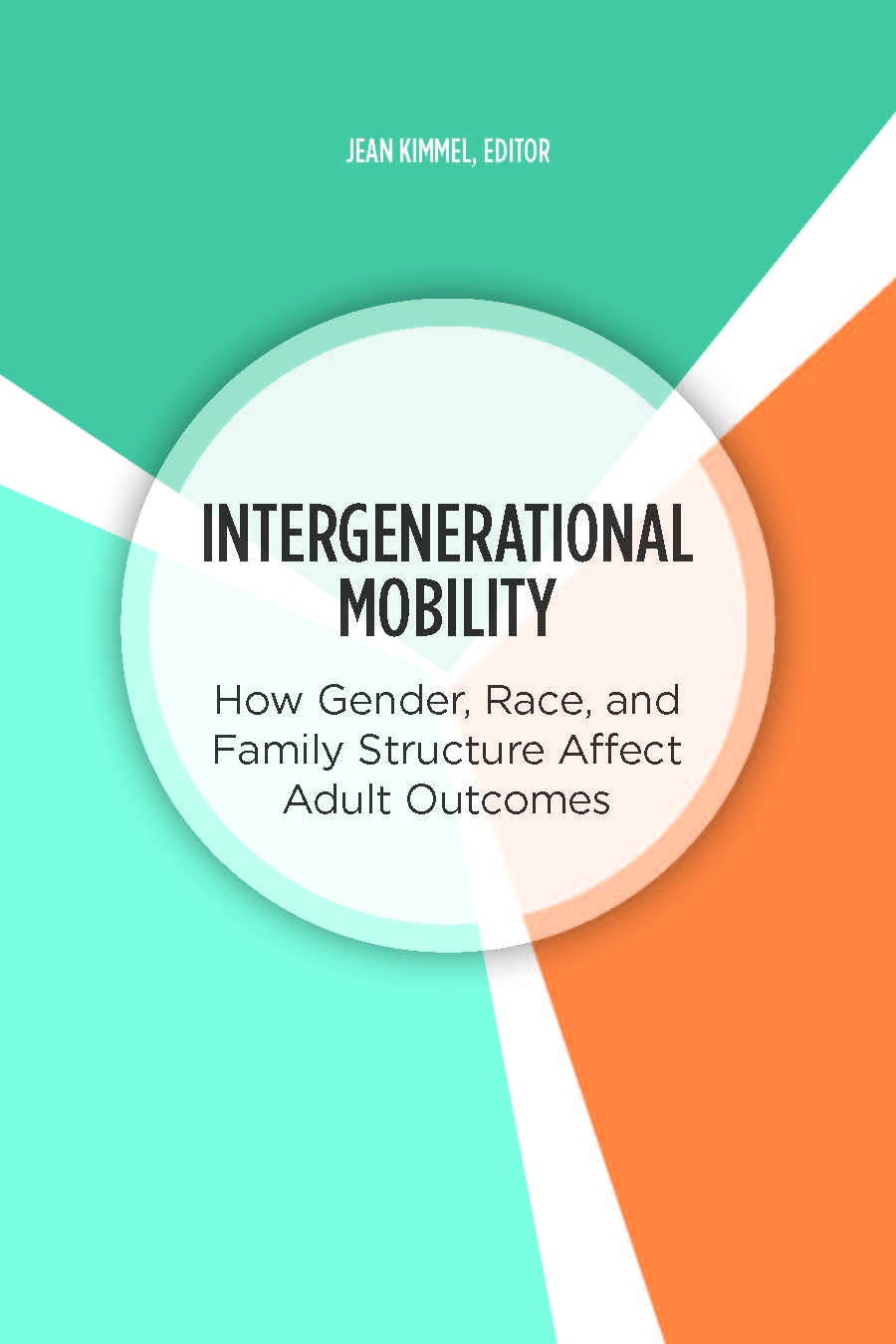
The concept of children achieving a higher status than their parents, called intergenerational mobility, is a key component of the American Dream. For those not born into privilege, however, reaching a comfortable middle-class lifestyle too often remains a dream.
A new book from the Upjohn Press explores the barriers to moving up. “Intergenerational Mobility: How Gender, Race, and Family Structure Affect Adult Outcomes” collects six essays on the topic that were presented during the 2019-2020 Werner Sichel Lecture Series at Western Michigan University.
Recent studies point to a decline in intergenerational mobility due to weakening familial relationships, mostly in poor or single-parent households or in households of color. In addition, linkages between marriage declines and labor market participation are exacerbating inequality particularly, it is thought, among males raised in single-parent households.
“Intergenerational Mobility” provides a detailed look at the complex relationships that impact the intergenerational mobility of children along with the linkages between labor market and marriage declines that impose lifelong burdens on children growing up in such households.
Editor Jean Kimmel presents six contributions from noted researchers who, together, show how weakening family structure contributes to declining labor market success and, therefore, declining intergenerational mobility. Included are:

- Introduction and Overview: Intergenerational Mobility in the Modern Era, Jean Kimmel. Kimmel describes the impetus for the series of lectures that appear as the following chapters and provides detailed summaries of each chapter and the lessons that can be gleaned from the chapters as a whole.
- A Comparison of U.S. Parents’ Time with Children by Child Gender and Family Structure, Rachel Connelly and Jean Kimmel. Connelly and Kimmel examine mothers’ and fathers’ parenting time with an eye toward identifying systematic differences by marital status and child gender that might provide evidence of gendered parenting time driving the so-called gendered single mother disadvantage—that is, the notion that sons are damaged more than daughters from being raised by a single mother.
- Behavioral Insights, Parental Decision Making, and Investments in Children’s Development, Ariel Kalil and Susan Mayer. Kalil and Mayer use insights from the field of psychology to explain differences in parenting strategies. They use the results of small-scale experiments to show that inexpensive policy interventions can modify parenting behavior in ways that would be expected to improve child development.
- Gender Differences in (Some) Formative Inputs to Child Development, Michael Baker. Baker focuses on differences in maternal health investments by gender that manifest very early in life. He starts with a focus on gender differences in health outcomes for low birth weight newborns, noting that very low birth weight male infants may be receiving a suboptimal amount of health care at the time of their birth. Baker’s data show no meaningful difference in breastfeeding patterns by child gender, but he does show that mothers interact, on average, somewhat more negatively with young sons than young daughters.
- Household Structure and Socioeconomic Mobility: The Role of Mothers, Sarah Kroeger. Kroeger finds that mothers’ education and household income play important independent roles in influencing their daughters’ economic status in adulthood, with maternal education particularly important for children raised by unmarried mothers.
- Race and Intergenerational Mobility in the United States, Bhashkar Mazumder. Mazumder documents the lack of progress in narrowing the race mobility gap and offers the warning that without innovative policy interventions, this gap is likely to become permanent. His policy suggestions include improvements in the quality of human capital investments and improvements in health investments.
- Accounting for Race Differences in How Family Structure Shapes the Transition into Adulthood, Paula Fomby. Fomby examines potential race differences in the role of family structure, including parents’ marital status and multigenerational households. She observes that policy development has been hindered by bias in how family structures are described by researchers and policymakers.
Overall, the book confronts and suggests answers for solving one of our society’s most difficult issues—how to break the link between marriage declines and decreasing labor market participation that continues to contribute to growing inequality.
The first chapter of the book is available for free download, along with a link to buy the book, at the Upjohn Press:
